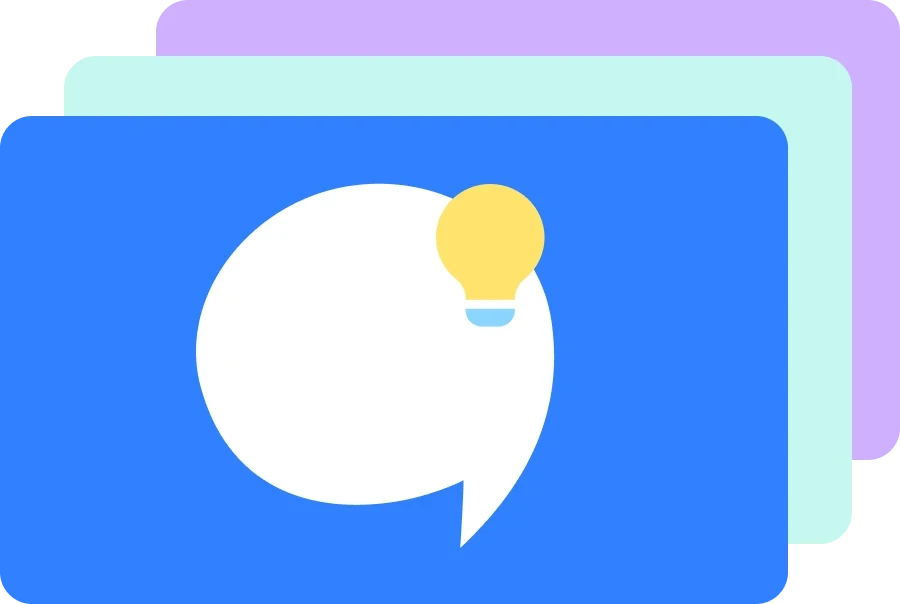Have you ever had an idea that could change your product?
Product management is a discipline that focuses on taking on a problem with solutions that aren’t real (product vision) putting together a short-term bridge (product strategy) and bringing together ideas that make that bridge a reality. That last part, turning that bridge into reality, is the work of product discovery.
Product discovery is where you take that idea that you have, and test it to make it real. Bringing an idea to life can be a challenging journey, but the process of product discovery can help make it a reality.
In this article, we will take a look at the stages of product discovery. These stages can vary based on the environment that you are in but, overall, you can put them in five buckets - ideation, research, prototyping, production, launch, and marketing. We’ll explore each in detail.

The 5 stages of product discovery
Stage 1: Ideation
The first stage of product discovery is ideation. This is the stage where you come up with an idea for a product. It could be a solution to a problem, a new invention, or an improvement on an existing product. The goal is to come up with an idea that has the potential to be a successful product.
Ideas come from many sources.
As a product manager, you have to make a point to create an open ideation environment for those around you. That means customers, engineers, and yes, even salespeople, can bring ideas. Your job as a product manager is to help align the ideation and ensure that it is tied to the strategic problem your team is trying to solve.
Tip: When coming up with ideas, encourage everyone to think outside the box. No idea is too crazy, and sometimes the most successful products come from the most unexpected places.
Stage 2: Research
Once you have an idea, the next stage is to research and analyze the market to determine if your product idea is viable. In this step, your job is to analyze the idea and see if there is a way to make it real while thinking about the available resources, how well it works with the user, and sometimes, how the idea fits in the marketplace.
Ideas are great, but only if they can get built. Marty Cagan talks about the “Four Big Risks”, which you’ll find below.
value risk (whether customers will buy it or users will choose to use it)
usability risk (whether users can figure out how to use it)
feasibility risk (whether our engineers can build what we need with the time, skills, and technology we have)
business viability risk (whether this solution also works for the various aspects of our business)
These risks are critical to be understood by the product development team and should be considered through this stage of product discovery.
You can get the answers to these forms of risk by engaging with customers and the business, talking about the idea and the problem with tools like switch interviews from the Jobs to Be Done Framework.
Tip: Make sure to thoroughly research your problem. This will help you understand your potential customer base and give you insights into what your product needs to offer to be different from the rest.

Stage 3: Prototyping
The next stage is prototyping. This is where you create a working model of your product. The prototype can be as simple or complex as you want, but it should be functional enough to demonstrate the core features of your product. This stage is important as it allows you to test and refine your product before investing too much time and money.
As a product manager, you’ll help make sure that the team keeps moving here. You’ll need to make decisions on if this should move forward, or if the team should go back to the research phase. Think about the four big risks as you work through your prototypes. Don’t overthink this step, you’ll know a winner when you see it because participants will start to feel like what you are showing them could solve problems.
Tip: Test your prototype with real customers. Make sure you are adjusting and changing with your feedback, your first prototype won’t be right, and real customers will let you know by giving honest feedback.
Stage 4: Production
After prototyping, the next stage is production. This is where you create your product for release. This is where the rubber meets the road, and the team can start to solicit feedback as they build.
As a product manager, this is where you shift to supporting the engineers and designers you work with, and take the opportunity to make their lives easier. If they need anything, you are “Johnny on the spot” to get them what they need.
Tip: Take advantage of the time to get buy-in from other parts of the business and begin to “enable” them. What do sales need? How about marketing? Have you talked to customer success? Go to other parts of the business and share what your team has committed to building.

Stage 5: Launch and marketing
The final stage of product discovery is launch and marketing. This is where you bring your product to market and start promoting it to potential customers. You need to determine your target audience, pricing, and marketing strategy. You also need to create a brand for your product and develop packaging and advertising materials.
This is where the work of enablement pays off, since the other parts of the business are aware of the new idea coming, and can support it without being caught off guard.
Note: If your team has product marketing, this is where they often take hold of the process. Your job as a product manager is to coordinate the handoff and provide them with insight from the previous stages to make their lives easier (such as anecdotes from the research or prototyping phase).
Tip: Make sure to align your product strategy with your marketing strategy, this will help guide iterations that may come.
Conclusion
Product discovery is a vital process in the development of any successful product. The five stages of product discovery, represented in ideation, research, prototyping, production, and launch and marketing, allow for a thorough and systematic approach to product development. By following these stages and implementing the tips provided, product development teams can create products that meet customer needs.
It is important to remember that product discovery is an iterative process that requires creativity, critical thinking, and a willingness to pivot when necessary. We encourage readers to put these stages into action and embark on their product discovery journey, armed with the knowledge and practical advice provided in this article.
For more actionable information about product discovery, check out this article on how you can carry out a discovery workshop with templates.

Adam Thomas

Read also
All product feedback in one place






